|
1967 - Tshombe and GAPAN
As mentioned in 1966, Air Gregory had acquired their first jet aircraft in the form of Hawker Siddeley HS.125 Series 1 G-ASNU, which was based at Luton. This was to suffer a strange incident on 30 June whilst carrying out a charter flight from Ibiza to Palma, Majorca. On board was Moise Tshombe, the former President of the breakaway state of Katanga and later the Prime Minister of the Democratic Republic of Congo. Charged with treason then sentenced to death by General Mobutu, who had come to power in the Congo after a coup, Tshombe was forced into exile in Spain. In 1967, the Congolese Government assumed Tshombe was attempting to return to Africa, causing alarm among the countries supporting Mobutu, particularly France.
|
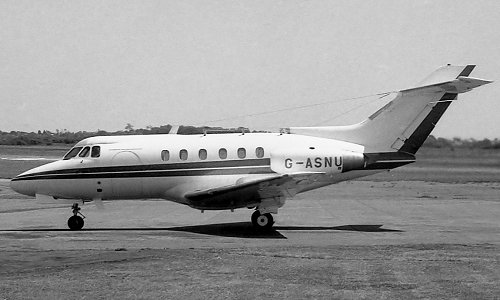
Air Gregory's Hawker Siddeley HS.125 Series 1 G-ASNU, the aircraft at the centre of the strange Tshombe affair.
|
Of the two crew and seven passengers on board the Air Gregory jet, one was Francis Bodenan, an agent of the French external intelligence agency, SDECE. He promptly hi-jacked the jet, soon after take off from Ibiza, and forced the crew to fly to Roufarik Air Force Base in Algeria. Tshombe was jailed, then placed under house arrest until he died in 1969. The crew, Trevor Coppelstone and David Taylor, were also arrested and not released until 22 September, when they were returned to the UK. The aircraft was to languish in Algeria for almost a year, finally being returned on 18 April 1968. This was to cost Ken Gregory's organisation heavily, because the mortgage on the aircraft still had to be paid, but it was not making revenue whilst sitting in the desert. This whole sorry affair was to have serious repercusions, as will be recounted later.
|
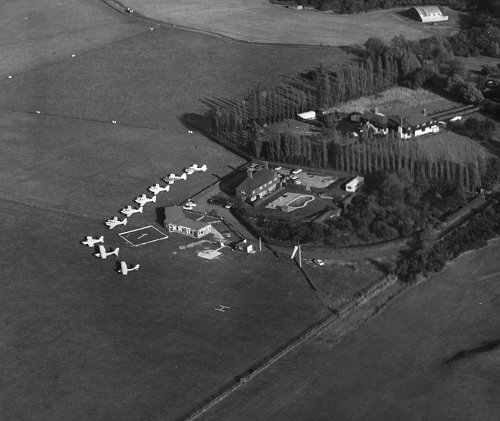
Just a small part of the Gregory Group's fleet assembled at Denham for a publicity shot in 1966. The costly Tshombe incident was to have serious repercussions for the group.
|
To return to Denham and the success the aerodrome was enjoying as a venue for a variety of aviation events, 1967 was to see the first in a series of air displays held by the Guild of Air Pilots and Navigators. The Guild, known by it's initials, GAPAN, was founded in 1929 at a time when flying was, to use a dreadful pun, really taking off. Commercial air travel was growing and private flying had become an affordable pastime for many. However, outside the military organisations, there was little in the way of co-ordination or control of standards for aircrew and operators. The Guild was formed to change that, to provide an authoritative body of opinion and to forward the cause of air safety with both government and industry, a role it continues in today. The Air Show at Denham was held to raise funds for two bodies GAPAN wholeheartedly supports, the Air Safety Trust and the Pilots' Benevolent Fund. Like shows held at Denham previously, the event was to include a wide variety of aircraft and displays to showcase the range of aviation activities available to the public. These included parachutes, gliders and of course aerobatics; two displays of note being those from the Red Pelicans of the RAF's Central Flying School and from the master of aerobatics, Neville Browning, in his Zlin 326. Again, the event was a great success, and was to be the first of many GAPAN was to hold at Denham.
|
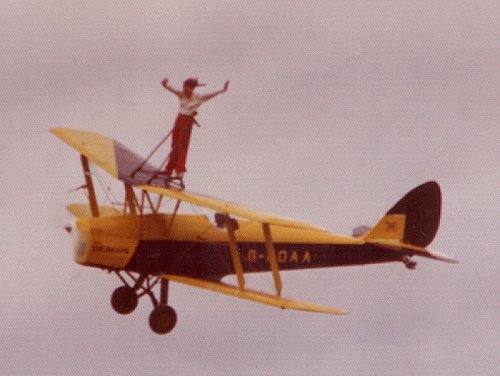
The Tiger Club supported the 1967 GAPAN with a range of displays, including wing walking on their Tiger Moth, G-AOAA, known as The Deacon.
|
|
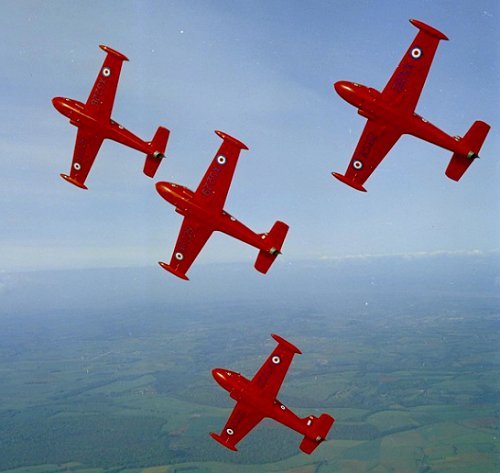
The world's oldest flying school, the Central Flying School of the RAF, provided their aerobatic team, the Red Pelicans.
|
|
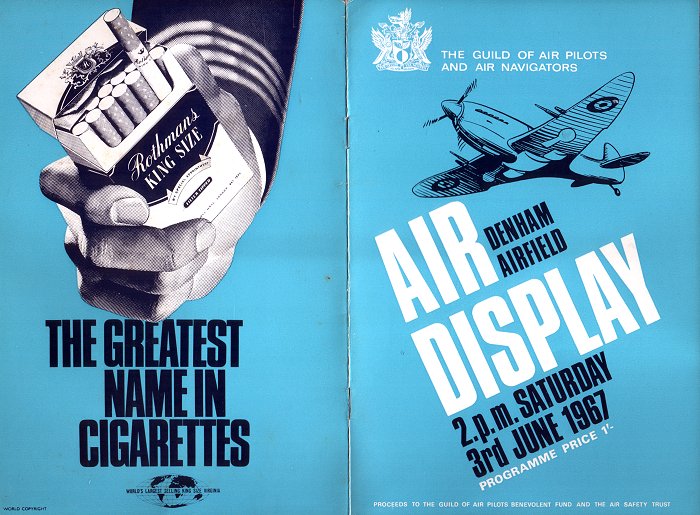
The programme for the 1967 GAPAN Air Display.
|
|
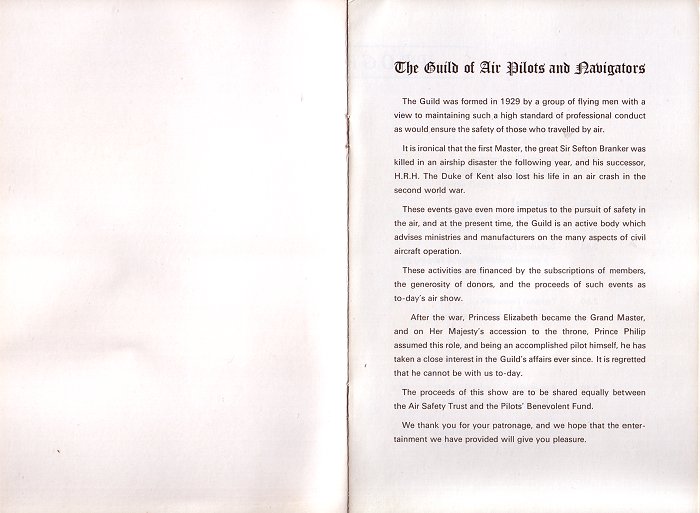
The programme for the 1967 GAPAN Air Display.
|
|
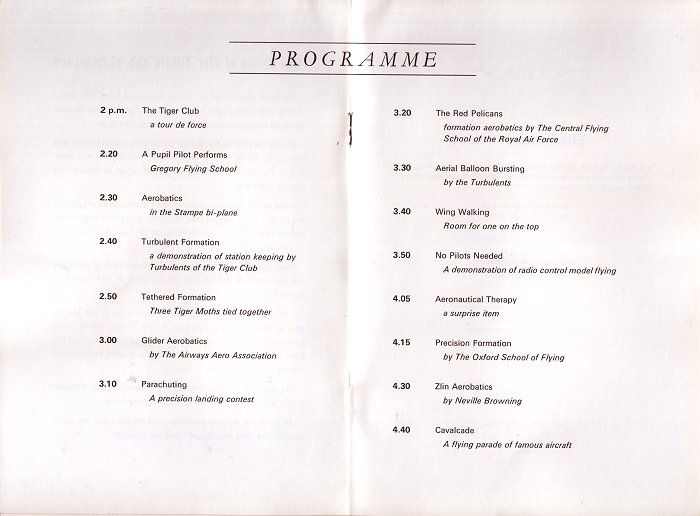
The programme for the 1967 GAPAN Air Display.
|
|
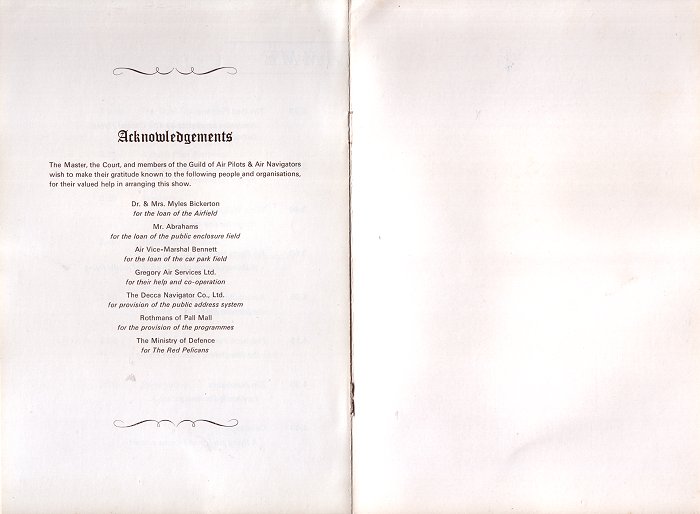
The programme for the 1967 GAPAN Air Display.
|
Speaking of the development of the aerodrome, 1967 also saw a number of planning permission applications made. These were for fuel tanks on the south side of the aerodrome and offices and the siting of two caravans on the north side. All of these were approved over the course of the year meaning the future was looking bright, as will be related next.
|
|

